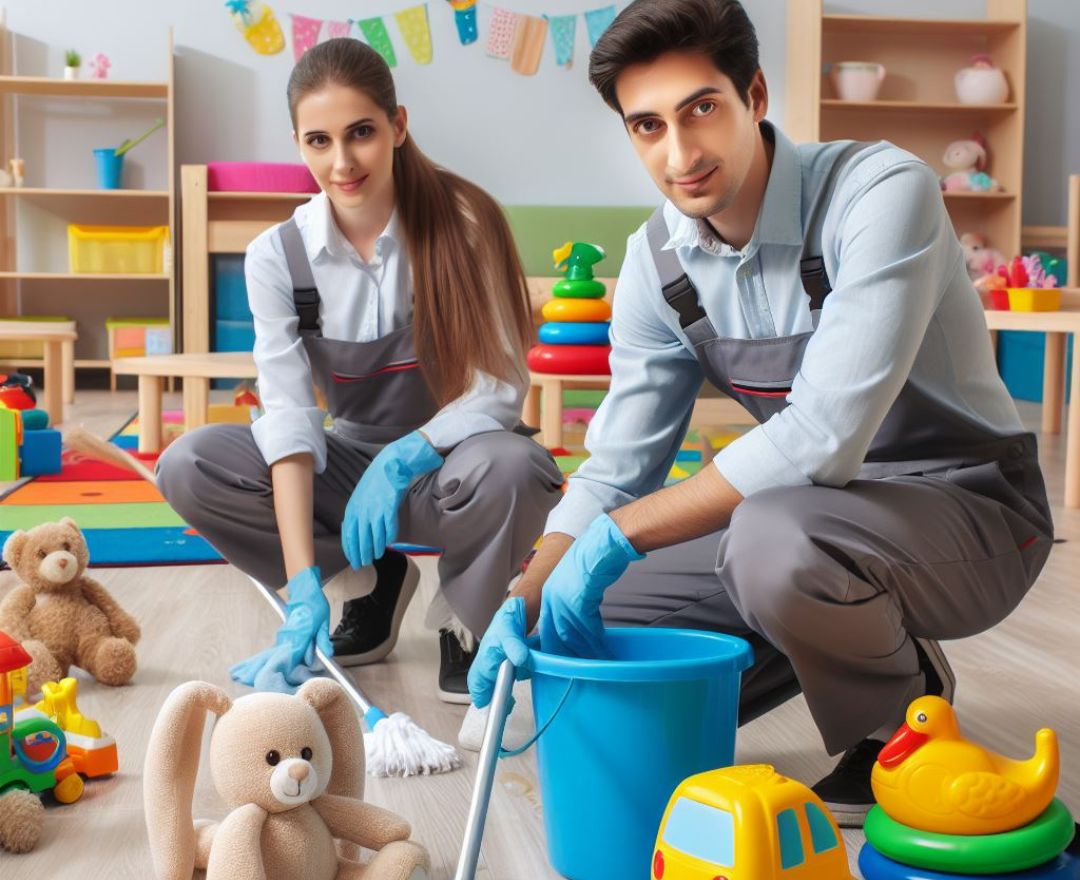
How Often Should Daycare Clean Toys
Posted by Suji Siv @Clean Group on 2024-03-13
How Often Should Daycare Clean Toys
In daycare settings, where young children spend hours playing and learning, the cleanliness of toys is paramount to prevent the spread of germs and ensure a safe environment. Given the frequency with which children explore the world through touch, and their tendency to place objects in their mouths, toys can become hotspots for bacteria and viruses. This introduction will delve into the recommended practices for cleaning and sanitizing toys within daycare facilities, emphasizing the importance of regular, scheduled cleaning routines. It will outline different approaches for various types of toys, from plush to plastic, and the role of staff in maintaining these standards. Additionally, it will touch on the importance of involving children in the cleaning process as part of teaching hygiene practices. The goal is to provide a comprehensive overview of effective strategies to keep toys clean, ensuring the health and well-being of children in daycare settings, and the expectations for cleaning frequency to adapt to different levels of use and exposure to germs.
Prioritizing Hygiene and Safety: Establishing Cleaning Protocols for Daycare Toys
Maintaining clean and sanitized toys is essential in daycare settings to promote a safe and hygienic environment for children. Daycare facilities should establish clear cleaning protocols outlining how often toys should be cleaned and sanitized to minimize the risk of spreading germs and infections. While there is no one-size-fits-all approach, guidelines from health authorities recommend cleaning toys daily or as needed, depending on factors such as the type of toys, the frequency of use, and the age of the children.
Daily Cleaning Routines: Incorporating Toy Cleaning into Daily Caregiving Activities
To ensure thorough cleanliness and prevent the spread of germs, daycare providers should incorporate toy cleaning into their daily caregiving routines. At the end of each day, toys should be inspected for visible dirt, spills, or contamination and promptly cleaned and sanitized as necessary. This daily cleaning regimen helps maintain a high standard of hygiene and reduces the risk of illnesses among children and caregivers alike. By making toy cleaning a routine part of daily caregiving activities, daycare providers can create a safe and healthy environment for children to learn and play.
Adapting Cleaning Frequency: Tailoring Cleaning Schedules to Meet the Needs of Different Toys and Play Areas
While daily cleaning is essential, daycare providers should also consider the specific needs of different toys and play areas when establishing cleaning schedules. Toys that are frequently handled or mouthed by children, such as plush toys or teething rings, may require more frequent cleaning than less frequently used toys. Additionally, play areas with high levels of traffic or potential for contamination, such as sensory tables or play kitchens, may need more frequent cleaning to maintain cleanliness and safety. By adapting cleaning frequency based on the needs of toys and play areas, daycare providers can ensure comprehensive hygiene and minimize the risk of illness.
Mid-Day Cleaning Sessions: Incorporating Interim Cleaning Sessions to Maintain Toy Hygiene
In addition to daily cleaning routines, daycare providers may benefit from incorporating mid-day cleaning sessions to maintain toy hygiene throughout the day. Between morning and afternoon play sessions, caregivers can take the opportunity to quickly clean and sanitize toys that have been heavily used or soiled. This interim cleaning helps prevent the accumulation of dirt and germs and ensures that toys remain clean and safe for continued use. By integrating mid-day cleaning sessions into their schedules, daycare providers can uphold high standards of cleanliness and hygiene throughout the day, promoting a healthier environment for children and staff.
Seasonal Cleaning and Maintenance: Implementing Regular Deep Cleaning Sessions for Toys
In addition to daily and interim cleaning routines, daycare providers should schedule regular deep cleaning sessions for toys to address accumulated dirt, grime, and germs. Seasonal cleaning and maintenance sessions allow caregivers to thoroughly clean and sanitize toys, play equipment, and play areas to maintain optimal cleanliness and safety. During these deep cleaning sessions, toys should be inspected for signs of wear and tear and repaired or replaced as needed to ensure continued safety and functionality. By implementing regular seasonal cleaning and maintenance routines, daycare providers can uphold high standards of hygiene and provide a safe and healthy environment for children to thrive.
Collaborating with Cleaning Professionals: Partnering with Experts to Ensure Effective Toy Cleaning Practices
For daycare providers seeking guidance on effective toy cleaning practices, collaborating with cleaning professionals can be invaluable. Cleaning experts can provide insights and recommendations on best practices for toy cleaning, including suitable cleaning products, techniques, and equipment. They can also offer training and support to daycare staff on proper cleaning procedures and hygiene protocols. By partnering with cleaning professionals, daycare providers can access the expertise and resources needed to implement comprehensive toy cleaning practices and maintain a safe and healthy environment for children and caregivers alike.
Other Cleaning Posts: